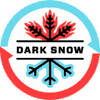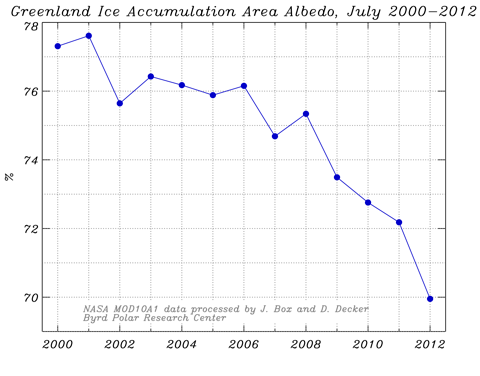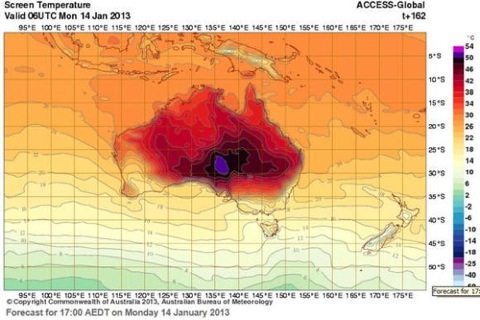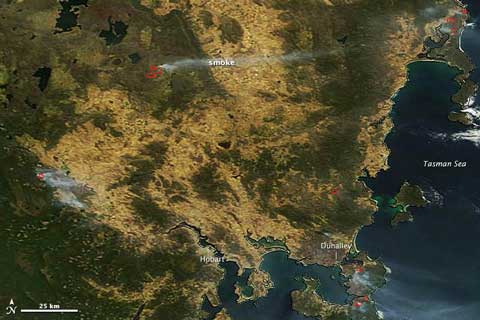 In this guest post, Professor Jason Box of the Geologic Survey of Denmark and Greenland (yes — he has a new job!) explains the genesis of the Dark Snow Project, a unique crowd-funded scientific expedition to Greenland planned for later this year. If you’ve got a few dollars to spare and want to make a contribution to improving the sum of human knowledge in a place that’s proving crucial to the future of the planet, this is a great way to do it.
In this guest post, Professor Jason Box of the Geologic Survey of Denmark and Greenland (yes — he has a new job!) explains the genesis of the Dark Snow Project, a unique crowd-funded scientific expedition to Greenland planned for later this year. If you’ve got a few dollars to spare and want to make a contribution to improving the sum of human knowledge in a place that’s proving crucial to the future of the planet, this is a great way to do it.
Birth of an idea
On my way to my 23rd Greenland expedition, sitting in New York’s LaGuardia airport terminal, completing a 25 June, 2012 blog post about Greenland’s declining reflectivity, I noticed that the crowd in the waiting area were captivated by TV news coverage of the record setting Colorado wildfires. While my recently published work had linked Greenland’s reflectivity (aka albedo, Latin for whiteness) decline with the warming of the previous decade, what remains unresolved is the relative importance wildfire soot that further darkens the ice, acting as a multiplier of the feedback process.
From LaGuardia, I rang fellow Colorado native and NASA JPL snow optics expert Dr. Tom Painter to ask if snow samples plus modern microscopy and chemistry could identify wildfire soot from Colorado?
As we talked, I recalled a 2009 headline: Alaska’s biggest tundra fire sparks climate warning.
“Tom, given samples, is it possible to discriminate wildfire soot with that from industrial sources?”
“Yes,” he said.
Before the flight boarded we had decided it would be a good idea to sample Greenland’s ice and snow for wildfire soot. All we had to do was muster the resources to get to the ice sheet’s highest elevations where the satellite data showed a conspicuous pre-melt reflectivity decline.

7.5% reflectivity decline in July for the upper elevations ice sheet, corresponding with 50 exajoules more solar energy absorption by the ice sheet for this month between 2000 and 2012. For the June-August [summer] period, the ice sheet is now absorbing an additional 1.5 times the total US annual energy consumption. Part of the reflectivity decline is due to the effect of heat, rounding ice crystals, reducing light scattering. Another component is soot. But we don’t know if the effective importance of soot is 1%, 10%, or 50%.
Continue reading “Wildfire smoke – bad news for Greenland’s ice: Dark Snow project needs your money”
Like this:
Like Loading...



 In this guest post, Professor
In this guest post, Professor 